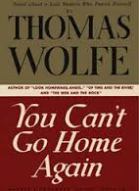10 Famous Self-Educated Authors
This week sees the latest instalment in my famous author series. It is dedicated to famous authors who received little or no formal education.
The following 10 authors were largely self-taught:
Jane Austen (December 16th 1775 – July 18th 1817)
(December 16th 1775 – July 18th 1817)
Jane Austen lived in an era when women’s education was not viewed as a priority. In addition to her own self-education in the form of voracious reading, she received some tuition from her father and older brothers. By her teenage years Austen was experimenting with different literary forms.
Mark Twain (November 30th 1835 – April 21st 1910)
(November 30th 1835 – April 21st 1910)
Mark Twain once famously said, ‘I have never let my schooling interfere with my education.’ The iconic author and humorist was forced to leave school and find a job at the age of 12 following the death of his father. Twain found employment as an apprentice at the Hannibal Courier.
Jack London (January 12th 1876 – November 22nd 1916)
(January 12th 1876 – November 22nd 1916)
Jack London received little in the way of formal schooling. He started working odd jobs when he was 10. At 13 he was working 12 to 18 hour days at Hickmott’s Cannery. London credited the Victorian novel Signa, which he found and read when he was 9, as sowing the seed for his later literary success.
Charlotte Perkins Gilman (July 3rd 1860 – August 17th 1935)
(July 3rd 1860 – August 17th 1935)
The father of writer and feminist Charlotte Perkins Gilman left when she was a small child, leaving her family destitute. Gilman taught herself to read at the age of 5. Later she frequented public libraries. Gilman also attended a number of schools, in addition to studying via correspondence, but only up to the age of 15.
Maxim Gorky (March 28th 1868 – June 18th 1936)
(March 28th 1868 – June 18th 1936)
Iconic Russian author Maxim Gorky was brought up in relative poverty by his grandmother after being orphaned at a young age. At the age of 12 he ran away from home and travelled across the Russian Empire for 5 years, living as a tramp for much of this time.
H.P. Lovecraft (August 20th 1890 – March 15th 1937)
(August 20th 1890 – March 15th 1937)
Renowned horror writer H.P. Lovecraft suffered from ill health as a child, resulting in him rarely attending school until the age of 8, and missing a considerable amount of school after that. Lovecraft used the time to read prodigiously, as well as studying astronomy and chemistry.
Edith Wharton (January 24th 1862 – August 11th 1937)
(January 24th 1862 – August 11th 1937)
Pulitzer Prize-winning American novelist and short story writer received little formal education. She started writing poetry at a young age and even tried to write a novel when she was only 11. At the age of 15 her translation of the German poem Was die Steine Erzählen earned her $50.
H.G. Wells (September 21st 1866 – August 13th 1946)
(September 21st 1866 – August 13th 1946)
Wells left school when he was only 11. This was because his professional cricket playing father had fractured his thigh. The loss of income meant Wells had to take an apprenticeship, which he despised. The experience inspired 2 of his novels, The Wheels of Chance and Kipps.
George Bernard Shaw (July 26th 1856 –November 2nd 1950)
(July 26th 1856 –November 2nd 1950)
Dublin born playwright and critic George Bernard Shaw attended school irregularly as a child. By the age of 15 he had quit and was working as a junior clerk. He once said, ‘Schools and schoolmasters, as we have them today, are not popular as places of education and teachers, but rather prisons and turnkeys in which children are kept to prevent them disturbing and chaperoning their parent.’
Doris Lessing (October 22nd 1919 – November 17th 2013)
(October 22nd 1919 – November 17th 2013)
British novelist, poet, playwright and short story writer Doris Lessing was awarded the Nobel Prize in Literature in 2007. She attended an all-girls school in Salisbury (now Harare) until the age of 14. The following year she left home and found work as a nursemaid. During this time she continued her self-education and started writing.
























































